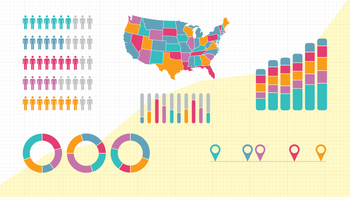
Does Farxiga Cause Weight Loss? (Plus 4 More Farxiga FAQs)
Key takeaways:
Farxiga (dapagliflozin) is a Type 2 diabetes medication that's also approved for chronic kidney disease and heart failure. It’s not FDA-approved for weight loss, but many people taking Farxiga lose about 6 to 7 pounds during the first 6 months.
Experts believe Farxiga causes weight loss because it removes extra glucose (sugar) from the body. This means there’s less excess glucose available to be turned into fat cells.
There are several ways to save on Farxiga. GoodRx can help you access Farxiga at an exclusive cash price of $288. Manufacturer savings cards and patient assistance programs are also available.
Access savings on related medications
Table of contents

Can a diabetes medication cause you to drop a few pounds? Whether you’re thinking about starting a diabetes medication or you’re already taking one, you may be curious about the possible weight loss effects.
One medication of interest in this regard is Farxiga (dapagliflozin). It’s FDA-approved to treat Type 2 diabetes, chronic kidney disease (CKD), and certain types of heart failure. But it can cause weight loss as a side effect. And that can be an added benefit for many people who take it.
Here, we’ll sort through it all and explain how Farxiga causes weight loss. Plus, we’ll answer other commonly asked questions about Farxiga, including how fast weight loss may happen and more.
Save over 40% on Qsymia with GoodRx
Discover the once daily Qsymia for weight management. Qsymia is for adults and children 12-17 in combination with a healthy diet and regular exercise.

1. Does Farxiga cause weight loss?
Yes. The American Diabetes Association (ADA) places Farxiga in the middle of diabetes medications in terms of how much weight loss it causes. Farxiga may cause more weight loss than metformin, but less than glucagon-like peptide-1 (GLP-1) agonists like Ozempic (semaglutide).
How much weight loss does Farxiga cause?
In clinical studies, Farxiga caused a little less than 5 lb of weight loss after 24 weeks (about 6 months) when combined with metformin. Real-world data suggests a higher amount of weight loss (about 10 lbs after about 6 months) may be possible with Farxiga when it’s taken along with other diabetes medications, such as metformin.
Keep in mind, these numbers are averages. Some people might lose more or less weight with Farxiga. It’s also possible that you won’t have any weight changes. Body weight changes are influenced by many factors, such as diet, exercise, and other medications.
2. How does Farxiga work for weight loss?
Farxiga belongs to a group of medications called sodium-glucose cotransporter 2 (SGLT2) inhibitors. Farxiga is thought to cause some weight loss by removing extra glucose (sugar) from your bloodstream. The glucose exits your body through your urine (pee). This makes less glucose available to be turned into fat cells. But Farxiga may also help burn fat (more details below).
On average, Farxiga removes about 75 grams of glucose from the blood each day. That equates to a loss of 300 calories. For reference, about 3,500 calories equals 1 lb.
Does Farxiga help burn fat?
Yes. Farxiga has been shown to cause changes to your metabolism and may help your body turn stored fat into energy. It can also help your liver break down some fats. So most of the weight loss from Farxiga is thought to be from decreases in body fat.
That being said, any time weight loss occurs, there’s a risk of losing lean body mass (muscle mass). And losing muscle mass can raise your risk of certain health complications, such as a greater risk of injury. Check out our GoodRx Health article on keeping your muscles and bones strong while losing weight for tips on preventing muscle loss.
3. How long does Farxiga take to work?
Farxiga starts working soon after your first dose. But how long it will take to see the full benefits depends on why you’re taking it.
Type 2 diabetes
Farxiga starts lowering your blood glucose just hours after your first dose. But it will take longer to notice a drop in your hemoglobin A1C (HbA1C or A1C), since that reflects your average blood glucose over the past 3 months. In initial clinical studies, Farxiga lowered A1C levels by an average of just under 1% over about 6 months. Most of the drop in A1C happened during the first 12 weeks of treatment.
Heart failure
The heart benefits of Farxiga may start to kick in within 2 to 4 weeks. These benefits should continue for as long as you take the medication.
The DELIVER clinical trial studied Farxiga in more than 6,000 people with certain types of heart failure. Half were given Farxiga. The other half were given a placebo (a pill with no medication in it). Within 2 to 4 weeks, the group taking Farxiga had fewer hospitalizations. Plus, they were more likely to feel better, reporting fewer heart failure symptoms.
Chronic kidney disease
You’ll likely need to take Farxiga for a longer period of time before its kidney benefits show up. A 3-year clinical study of more than 4,000 people with CKD showed that the kidney benefits of Farxiga started out slowly during the first year of treatment. But these benefits continued increasing during the following 2 years.
Of note, the people taking Farxiga in the study actually showed an initial decrease in eGFR (an estimate of kidney function). But further analysis found that this initial dip didn’t worsen long-term CKD outcomes. Unless eGFR drops significantly (more than 30%), no change in treatment is typically recommended.
4. How rapid is weight loss with Farxiga?
It’s possible that your body weight could start decreasing as soon as 3 days after starting Farxiga. However, the weight loss during the first month is usually from fluid loss (“water weight”). Fat loss happens more slowly — starting around 6 weeks after starting Farxiga and continuing for about 6 months.
Keep in mind: The ADA guidelines recommend at least a 5% decrease in body weight for most people with Type 2 diabetes who are considered overweight or obese. In one study, as many as one-third of people who took Farxiga in addition to metformin reached this mark after a year. But even a smaller degree of weight loss — as little as a 3% drop in body weight — can lower blood glucose and decrease risks for heart disease.
5. Does Farxiga cause weight gain?
Typically, Farxiga doesn’t cause weight gain for most people. But one study of over 600 people found that some people experienced weight gain while taking Farxiga.
This was only a short-term study, and not all participants were considered overweight to begin with. What’s more, the majority of the participants lost weight. So more research would be needed to determine who might have a higher risk of weight gain with Farxiga and how likely it is.
Keep in mind that there are multiple factors that can contribute to weight gain. Genetics, as well as your eating and exercise habits, can play a role. And other medications, such as insulin, can also make it harder to lose or maintain weight.
If you’ve noticed weight gain since starting Farxiga, let your diabetes care team know. They can help determine what may be causing it and suggest ways to help maintain a body weight that’s comfortable for you.
Tips on how to save on Farxiga
There are ways to save on Farxiga, which is available as a brand-name medication and authorized generic. GoodRx can help you navigate between GoodRx coupons, copay savings cards, and patient assistance programs to save money on your prescription.
Save with GoodRx: Anyone with a valid prescription, regardless of insurance status, can use GoodRx to purchase a 30-day supply of Farxiga at an exclusive cash price of $288.
Save with a copay savings card: If you have commercial insurance, you may be eligible to pay as little as $0 for Farxiga using a savings card from the manufacturer.
Save with patient assistance programs: If you’re uninsured or underinsured, you may be eligible for Farxiga’s patient assistance program, which offers the medication free of charge.
The bottom line
Farxiga (dapagliflozin) is a medication that is FDA-approved to treat Type 2 diabetes, chronic kidney disease (CKD), and certain types of heart failure. In clinical trials, Farxiga caused an average weight loss of 5 lb. Real-world data, however, suggest more weight loss may be possible.
Some people may notice weight loss from Farxiga within the first few days of starting it. Many people experience continued weight loss over the first 6 months of treatment. Farxiga doesn’t typically cause weight gain. But other factors, such as genetics or other medications you may take, can contribute to weight changes.
Why trust our experts?



References
Adamson, C., et al. (2022). Initial decline (dip) in estimated glomerular filtration rate after initiation of dapagliflozin in patients with heart failure and reduced ejection fraction: Insights from DAPA-HF. Circulation.
AstraZeneca Pharmaceuticals LP. (2023). Farxiga- dapagliflozin tablet, film coated [package insert].
Brown, E., et al. (2019). Weight loss variability with SGLT2 inhibitors and GLP-1 receptor agonists in type 2 diabetes mellitus and obesity: Mechanistic possibilities. Obesity Reviews.
ElSayed, N. A., et al. (2022). 8. Obesity and weight management for the prevention and treatment of type 2 diabetes: Standards of Care in Diabetes—2023. Diabetes Care.
ElSayed, N. A., et al. (2023). 9. Pharmacologic approaches to glycemic treatment: Standards of Care in Diabetes—2023. Diabetes Care.
Eunice Kennedy Shriver National Health Institute of Child Health and Human Development. (2021). What causes obesity & overweight?
Heerspink, H. J. L., et al. (2020). Dapagliflozin in patients with chronic kidney disease. The New England Journal of Medicine.
Ida, S., et al. (2021). Effects of antidiabetic drugs on muscle mass in type 2 diabetes mellitus. Current Diabetes Reviews.
Iqbal, N., et al. (2023). Perspectives in weight control in diabetes – SGLT2 inhibitors and GLP-1–glucagon dual agonism. Diabetes Research and Clinical Practice.
Kim, H., et al. (2021). Blood glucose levels and bodyweight change after dapagliflozin administration. Journal of Diabetes Investigation.
Nauck, M. A., et al. (2011). Dapagliflozin versus glipizide as add-on therapy in patients with type 2 diabetes who have inadequate glycemic control with metformin: A randomized, 52-week, double-blind, active-controlled noninferiority trial. Diabetes Care.
Ribola, F. A., et al. (2017). Effects of SGLT2 inhibitors on weight loss in patients with type 2 diabetes mellitus. European Review for Medical and Pharmacological Sciences.
Schork, A., et al. (2019). Effect of SGLT2 inhibitors on body composition, fluid status and renin–angiotensin–aldosterone system in type 2 diabetes: A prospective study using bioimpedance spectroscopy. Cardiovascular Diabetology.
Vaduganathan, M., et al. (2022). Time to clinical benefit of dapagliflozin in patients with heart failure with mildly reduced or preserved ejection fraction a prespecified secondary analysis of the DELIVER randomized clinical trial. JAMA Cardiology.
Wilding, J., et al. (2016). Glycated hemoglobin, body weight and blood pressure in type 2 diabetes patients initiating dapagliflozin treatment in primary care: A Retrospective study. Diabetes Therapy.
Willoughby, D., et al. (2018). Body composition changes in weight loss: Strategies and supplementation for maintaining lean body mass, a brief review. Nutrients.
Wolf, V. L. W., et al. (2021). Dapagliflozin increases the lean-to total mass ratio in type 2 diabetes mellitus. Nutrition & Diabetes.
Was this page helpful?
Related Articles
Browse medications
View AllResearch prescriptions and over-the-counter medications from A to Z, compare drug prices, and start saving.
























